Bucket, Butt or Bin
The traditional method of making plant food by soaking the plant material was to weigh the leaves down in the bottom of a bucket or water butt with a stone and wait until it decomposed. Ideally the container would have a lid as the product would have a strong unpleasant odour. I understand that the technical term that they stink.
However, as gardens have become smaller with less material to turn to food and space to hide an extra water butt several small commercial systems have come on the market and then dissapeared.
On our Composting Demonstration site, at Stokes Wood Allotment, Leicester, we use lidded nappy buckets for demonstrating the use of small volumes of plants such as dandelions and horse tail so that visitors can see the decomposition in progress.
Mixed weeds being killed are soaked in a dustbin while the plants used in larger quantities being soaked to produce feeds e.g. comfrey is soaked in old Bokashi bins or water butts enabling the liquid to be run off while most of the sludge remains in the bin. It helps speed the breakdown if the liquid is stirred vigorously every day of two.
There is a difference between making Plant Feeds by soaking and drowning perennial weeds to kill them to make them suitable for composting. The process of drowning perennial weeds will require soaking over weeks, months or even a couple of years(?) to kill weeds while soaking leaves and green shoots to make a liquid feed will only take days or two to four weeks (depending on the technique and equipment). When making liquid feeds only the young green parts of the plant are used carefully avoiding the use roots of perennial plants and seeds which may survive the process if the sludge is added to a cold compost heap. Chopping and tearing the greenery into small pieces will speed the decomposition.
The plant material can be contained in a plastic mesh tube or in a pair of old tights to reduce the need for filtering the product. I prefer a commercially available compost sack, or bag, sold to be used in the making of Compost Teas If unbagged material is used and it is not filtered the sludge will block the rose of the watering can, or spray, when being applied.
The effectiveness of the process can be influenced by the position of the buckets in the garden and of course being biological decomposition, it will occur best at temperatures favourable to the microorganisms involved. Within the range 12°C to 25°C is best. While some direct sunlight very strong sun over a period may cause the container to fad!
Ideally rainwater collected from the roofs of sheds or greenhouse. If tap water must be used it should be left standing for at least two days. After which the pH should be checked and a little spirit vinegar if it needs acidifying to bring it to a neutral PH.
Commercial systems
Several commercially available systems designed for the urban gardener with a small plot have appeared on the market since this website was started and we have used three on the demonstration site and at events.
By far the best ais the Hozelock Biomix which I use regularly and recommend for thos who only want to produce limited quantities of liquid feed.
A second system the Natural Plant Food maker is still advertised on Google, but marked as unavaialbe at the time this revision was made, so I have still included details below for the present.
Natural Plant Food Maker
Higrow Natural Plant Food Maker
This low-priced plastic food maker will make 4 litres of liquid fertiliser from green waste and can be kept outdoors in the garden. The green waste is put in a rigid plastic mesh basket and the four litres of water is poured into the bucket. The mixture is aerated by gently lifting the integral plunger on a regular basis. Two to four times a week is recommended but I would recommend daily agitation if possible.
The plant food will be ready for use in 3-4 weeks and can be dilute up to twice the original volume (1:1).
I had an early model of this plant food maker some years ago and found that the plastic mesh basket was a problem. After some months use the basket in which the green leaf waste is soaked distorted and the clips no longer held it together. We ended up using rubber bands to keep it closed. I have brought a second model for use on our demostration site three or four years ago and while the basket appears more rigid one of the clips was broken.
This model appears to be unavailable at present.
A second syatem, the Burgon & Ball Organic Plant Food Make,r consisted of a lidded stainless steel bucket with a central tube in which the leaves where contained during soaking. Is no longer made. I still have one butthe bucket it developed a leak
The third and in my opinion by far the best build quality and suitability for use is still advertised and I use mine regularly.
Hozelock BioMix
This 19 litre Biomix food maker is a quite expensive but is well designed and made, and it feels as if it will give years of use to the home gardener. It is also easy to use and contains the smell associated with making liquid feeds. Hozelock also make the point that the Biomix pays back its purchase price after only two uses when compared with buying packs of plant feed!
The tank has a lid which includes an external stirring knob allowing the stirring fingers to be rotated inside the tank without opening it and releasing the smell. A viewing window is provided in the lid The inner tank has an integral strainer to separate the liquid feed from the plant debris. A drainage tap enables easy decanting of the food.
A cotton filter bag is supplied for the additional filtration of plant fertiliser, to prevent the sprayer nozzle becoming clogged. I like this system and using it on the demonstration site and at home. Photos below show it being used with banana skins an activity I recommend to school garden clubs.
When using this equipment approx. 1kg of green plant material e.g. leaves and in some cases stems but not roots or seed heads are cut into as small as possible and put into the tank. 10 litre of rainwater is added and the lid put in place. The liquid is stirred throughly at least every two days.It can be difficult to stir if the leaves are not cut small enough. After about 10-15 days bubbles will stop rising to the surface of the liquid indicating that the macerating is complete. The liquid is run off and filtered into an opaque container unless it is to be used straight away. A cotton filter bag is supplied for the additional filtration of plant fertiliser, to prevent the sprayer nozzle becoming clogged. I like this system and will be using it on the demonstration site .
It can also be used for Bracken as a spray to repel aphids and watered onto the soil to help prevent wireworm and Lavander also to repel aphids and ants
The fertiliser is diluted between 5% and 20% for application by spraying or watering can.
Please note these systems are not designed to kill the plant material by drowning if this is required the weeds it should be left soaking in a bucket or bin for a longer period until it has all formed a black mush. This may take several months or even two years depending on the weed. See Plant Liquid Feeds
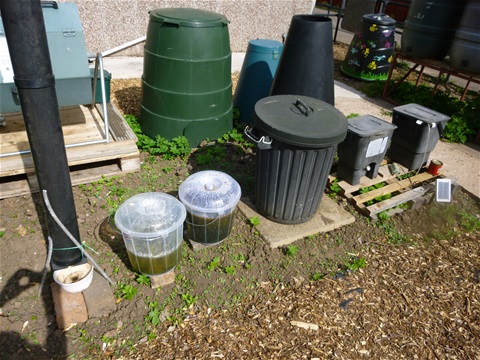
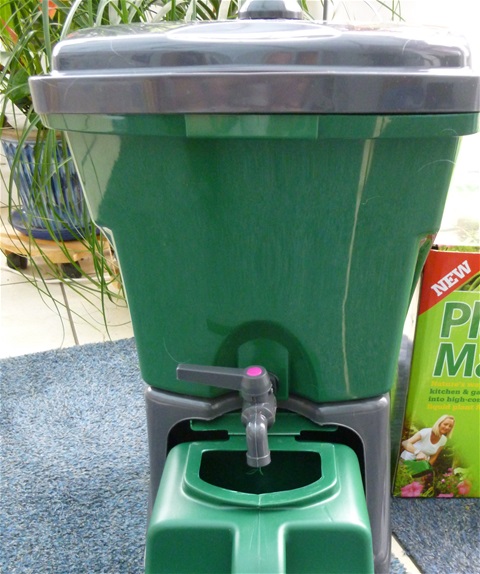
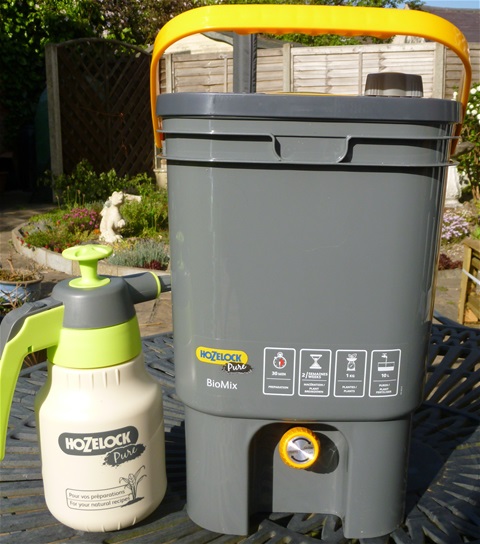
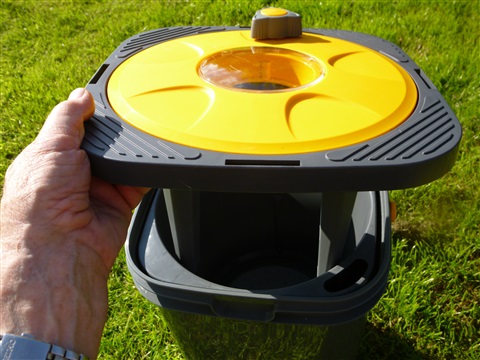
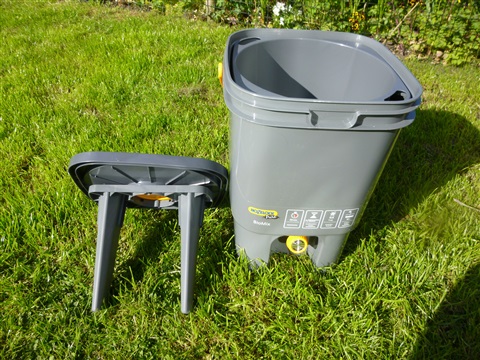
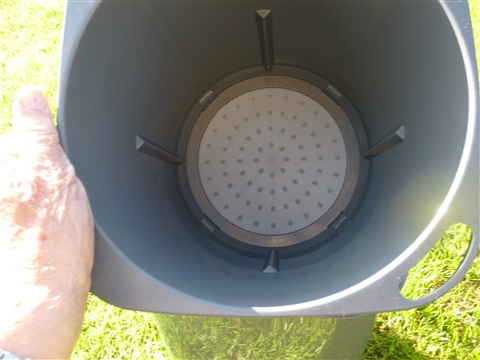
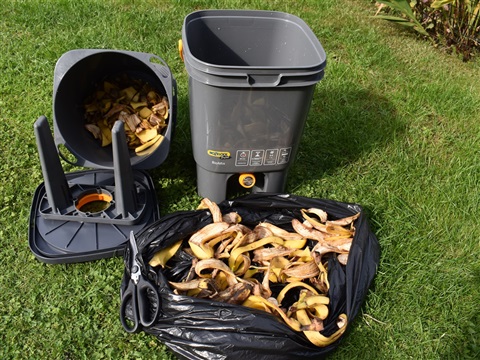
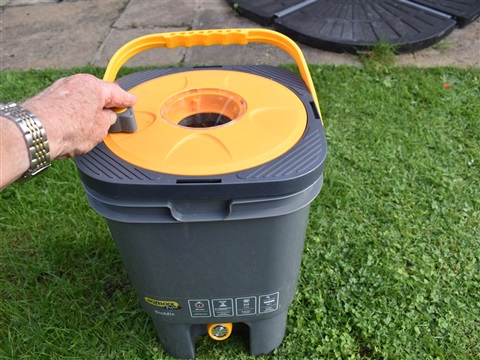
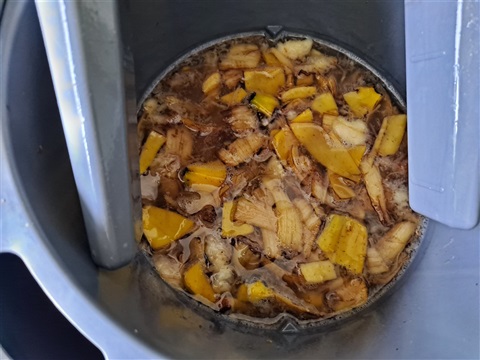
Rod
The Composting Demonstration Site is at Stokes Wood Allotment 2B Stokes Drive Leicester. It is normally open 10-12 on Wednesday mornings (Coffee and cooked breakfasts available)and by appointment
marc
Great indeed! Where in Leicester can these be seen ?